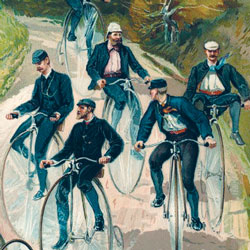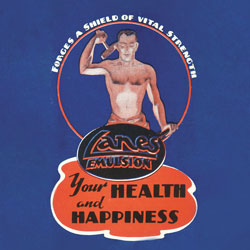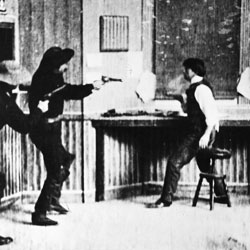
“The indecent foreign dance called the waltz was introduced,” the Times of London noted in 1816, “at the English court on Friday last…So long as this obscene display was confined to prostitutes and adulteresses, we did not think it deserving of notice; but now that it is attempted to be forced on the respectable classes of society by the evil example of their superiors, we feel it a duty to warn every parent against exposing his daughter to so fatal a contagion.”

“I find by sad experience,” one minister wrote toward the end of the seventeenth century, “how the towns and streets are filled with lewd, wicked children, and many children as they have played about the streets have been heard to curse and swear and call one another nicknames, and it would grieve one’s heart to hear what bawdy and filthy communications proceed from the mouths of such.”

Young bicyclists, warned one medical doctor writing for London’s National Review in 1897, risked contracting symptoms such as chronic dysentery, dementia, and “bicycle face.” “Has anybody ever seen persons on bicycles talking and laughing and looking jolly, like persons engaged in any other amusement? Never, I swear…With set faces, eyes fixed before them, and an expression either anxious, irritable, or at best stony, they pedal away.”

“Ointments,” wrote Pliny the Elder in the late first century, are unwisely “employed by our young men” who “ruin their vigor of mind by exercising their muscles.” Elsewhere in his Natural History, he blames “the Greeks, those parents of all vices,” for introducing ointments to Roman gymnasiums. “Indeed,” he continues, “it is a well-known fact that the governors of those establishments have sold the scrapings of the oil used there for a sum of eighty thousand sesterces.”

“The records of the Children’s Court sadly prove,” read a 1909 report on motion pictures by the Society for the Prevention of Cruelty to Children, “that this new form of entertainment has gone far to blast maidenhood and has led many boys to criminal careers. Boys have admitted to the judges that their skillful housebreaking was suggested by these pictures, and youngsters given to the practical application of the suggestions of the biograph have organized street bands of robbers and gone through all of the exciting incidents of the picture ‘just for the fun of the thing.’ ”

“A pernicious excitement to learn and play chess has spread all over the country,” Scientific American reported in 1859, after America’s “young countryman” Paul Morphy had vanquished European chess titans at a tournament. “Why should we regret this? it may be asked. We answer, chess is a mere amusement of a very inferior character, which robs the mind of valuable time that might be devoted to nobler acquirements, while at the same time it affords no benefit whatever to the body.”

“The free access which many young people have to romances, novels, and plays has poisoned the mind and corrupted the morals of many a promising youth,” Reverend Enos Hitchcock, himself a novelist, wrote in 1790. “Parents take care to feed their children with wholesome diet; and yet how unconcerned about the provision for the mind, whether they are furnished with salutary food, or with trash, chaff, or poison.”